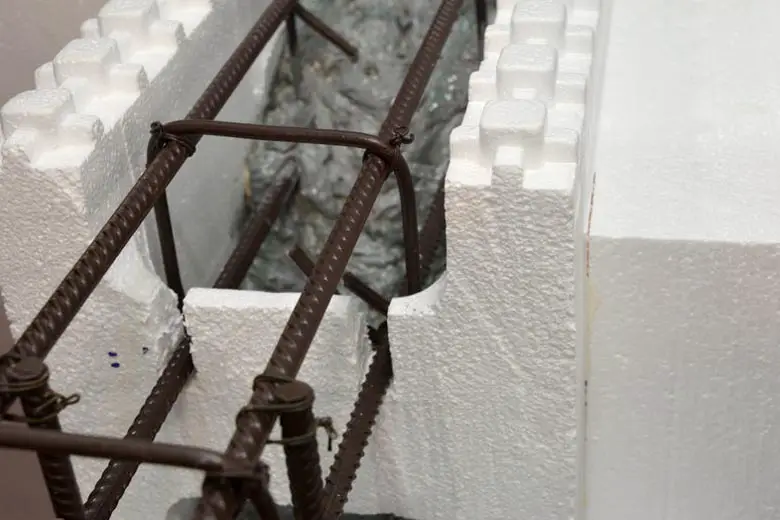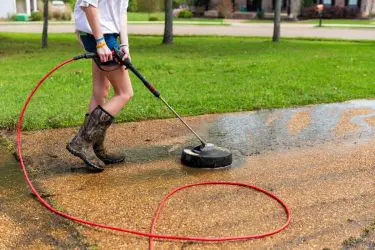The popularity of insulated concrete forms (ICFs) has soared in recent times as more now deploy them in their home construction. ICF was reserved for walls in foundations in the past, but today, homeowners are using them in above-grade walls. However, are insulated concrete forms worth it?
Insulated concrete forms are worth it because they offer many advantages ranging from increased energy efficiency to improved sound absorption. In addition, the cost of living in ICF homes is similar to the cost of living in conventional houses and may also be cheaper.
The rest of the article will cover six important facts about insulated concrete forms to help you decide if you should choose them for your next construction project.

Table of Contents
What Are Insulated Concrete Forms?
Insulated concrete forms feature solid insulation blocks of expanded polystyrene (EPS) separated by plastic webbing.
The forms are used to pour concrete walls instead of the conventional plywood or wood plank units. Contractors pour the concrete as soon as the blocks are in position and complete the wall construction with finishes such as siding or drywall.
On completion, insulated concrete form walls are around 6 to 12-inch (15.24 to 30.48 cm) thick. The condition of the soil and the level of support required for overhead components of a structure determine the final thickness.
6 Important Facts About Insulated Concrete Forms
Below are some important facts you need to know about insulated concrete forms.
1. Insulated Concrete Forms are Energy Efficient
ICFs tend to show a high insulation value because they are high-mass, feature more insulation, and allow little air infiltration. This isn’t surprising as EPS foam is one of the best insulating materials in existence. ICFs generally have 5-inch EPS insulation, giving them R-Values between R-22 and R-26. Some manufacturers also produce ICFs with R-values up to R-40.
The construction approach with ICFs also ensures continuous insulation without any gaps or insulation mistakes in between.
The airtight construction of ICFs also means there’s very little air infiltration. ICF homes block 84-92% of outside air when compared to standard homes with home wrap and caulking.
Overall, ICF constructions can cut your energy bills in half. If you support the walls with the right high-efficiency HVAC system, insulated attic, and energy-efficient windows and doors, the energy efficiency of the system could be a lot higher.
2. Insulated Concrete Forms Ensure Safety
ICF homes provide a level of safety most building systems can’t match. They’re more than 10 times stronger than most wood-framed structures and several times stronger than many cinder block constructions as well.
The structure of the material is why many ICF buildings have survived hurricanes, tornadoes, and wildfires. ICF construction is also common in military installation due to the blast and ballistic protection they provide. It’s no surprise that many insurance companies now offer incentives and discounts to ICF homeowners.
Some people avoid ICF in their construction because they mistakenly believe that EPS will burn in fires. In reality, EPS will only melt when exposed to high temperatures, but it won’t fuel the fire. Most ICF manufacturers add a flame retardant to their EPS foam, giving it self-extinguishing properties.
Due to these properties, ICF walls have a 4-6 hours fire-resistant rating. The wall won’t burn like wood or soften and bend like steel even at 2000°F (1093°C). Most wood walls will collapse in an hour or less.
3. Insulated Concrete Forms Make Homes Quiet
Most ICF homeowners agree that their homes are quiet compared to wood-frame houses, given the sound-absorbing qualities of EPS foam.
Most ICFs with a 6-inch (15.24 cm) concrete core have a Sound Transmission Class rating of 50-55 which means the walls will let in around a quarter or one-eighth of the sound that penetrates standard wood-frame structures.
It’s why ICF is now very popular in the commercial sector. Developers now use it to eliminate sound transmission between units in apartment buildings or between multiplex cinemas.
4. Insulated Concrete Forms Allow Design Flexibility
It’s possible to adapt ICF construction to different residential and commercial projects. It also makes specific architectural flourishes easier to implement.
For example, ICF constructions can accommodate extended spans because the construction can support steel beams and other such loads. It’s also easier to make windows wider in earthquake prone areas and implement winter construction in colder areas.
ICF walls are also easier to work with when it comes to exterior finishing. The foam layer makes it easier to implement acrylic textured stucco or finishes.
Applying manufactured stone to ICFs is easier compared to wood frames because there’s no need for an extra vapor barrier. Attaching wood, cement board, or vinyl sidings is also straightforward because attaching the siding material to the ICF furring strips is easy.
5. The Cost of Living in ICF Homes Isn’t Too High
Contrary to popular belief, the cost of living in an ICF home isn’t too high. It may be cheaper than living in a conventional home in some cases if you factor in the utility savings.
In many places, an ICF home will cost between 3-5% more to build compared to wood-frame structures.
6. ICF Homes Are Long Lasting
On average, ICF homes can last a lifetime with minimal maintenance. EPS doesn’t degrade over time.
So, coupled with the material’s ability to withstand natural disasters, you can expect the construction to last a lot longer than most wood-framed constructions.

What Are the Downsides to ICF Construction?
Some of the downsides to ICF construction include the following:
The Additional Cost of Construction May Be Prohibitive
As mentioned above, ICF construction may cost an extra 5% to complete compared to conventional houses.
That could amount to an extra $12,500 for a construction project that should cost $250,000, which is a sizable sum to come up with.
It may also make the difference between qualifying for a home loan.
You Need To Hire Specialized Labor
One of the reasons ICFs are costlier to work with is that you need specialized labor for the job.
If your worksite is located in an area with little to no contractors capable of incorporating ICF, you may need to hire out-of-town contractors. This can significantly increase the overall construction cost.
Remodeling May Be Difficult
While the durability of ICF is a strong selling point, remodeling is often difficult and more expensive. DIY remodeling jobs that would ordinarily require simple drywall refurbishing will require the expertise of qualified ICF contractors.
Therefore, it’s often a good idea to use more flexible materials for temporary construction.
Some Projects Can’t Incorporate Rebar Reinforcement
Most of the strength attributed to insulated concrete form walls is because of rebar. The moldable steel wires are great for fitting between the seams of the interior grid and reinforcing the concrete.
Unfortunately, many new ICFs feature plastic connectors. These work like more flexible reinforcement wires and are cheaper.
However, they leave little to no space to add rebar. This is a concern for corners because ICFs can be vulnerable to wall seams and other such structural instability.
Final Thoughts
Insulated concrete forms are worth it if you have access to experienced qualified contractors, and you don’t mind footing the additional upfront installation costs. The forms significantly improve temperature regulation, reduce exterior sounds, and increase your overall wall strength.
ICFs are also great at making homes less prone to natural disasters and accidents. Overall, it’s an excellent choice of wall material. However, if you’re unsure about using it in your construction, seek professional advice.




